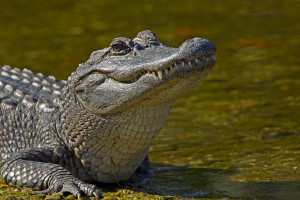After reading dozens of lists of strange economic indicators, ranging from things like unclaimed corpses to baby diaper rashes, I settled on researching more about the Alligator Population Index. Believe it or not, generally when there are more alligators in the world, the economy usually is not doing so well.
The reason? Well think about it. Alligator skin is typically used to make high priced luxury goods like handbags, shoes, belts and more. Basically anything that comes in leather comes in alligator skin, except it is usually around triple the price. These items are sold in stores like Neiman Marcus, Bergdorf Goodman, Saks Fifth Avenue, and Bloomingdales. They’re produced by brands like Gucci, Hermes, Manolo Blahnik and Jimmy Choo.
And who buys these goods? Generally it is the people who have the most money to spend. The trend starts from there. If the rich are not dropping $25,000 on an alligator skin handbag, then Gucci is not buying alligator skin from the tanneries, and then the tanneries are not buying the alligators from the farmers.
So the rich are watching their funds by not buying luxury goods. Then Gucci cuts back by not buying the skins at all. Then the tanneries have no reason to buy from the farmers. And the farmers lose A LOT of money.
A New York Times article from 2009 tells the story of Tommy Fletcher, a Floridian man who was forced to shut down his alligator farming business after 5 years. In 2008, Louisiana farmers gathered over 500,000 alligator eggs fro the wild. But in 2009, for the first time in a very long time, most farmers collected none.
The article names the economy as the “lead culprit.” It discusses how “even wealthy customers began balking at the price of alligator skin products, which can range from the expensive to the wildly expensive.” Once considered a bumper crop, there was now a large surplus in the alligator skin market. Alligator farming is a business that cannot sustain itself on even a shaky economy. It is an expensive business from top to bottom. It’s expensive to buy the eggs, raise the gators, buy the skin, produce the product, and then buying the finished product.
Since that large 2009 dip in alligator products, it has since shown signs of bouncing back, with the reopening of a few farms, and the re-production of products by the high-end brands.
http://www.nytimes.com/2009/11/30/us/30gator.html?_r=0

Leave a Reply
You must be logged in to post a comment.